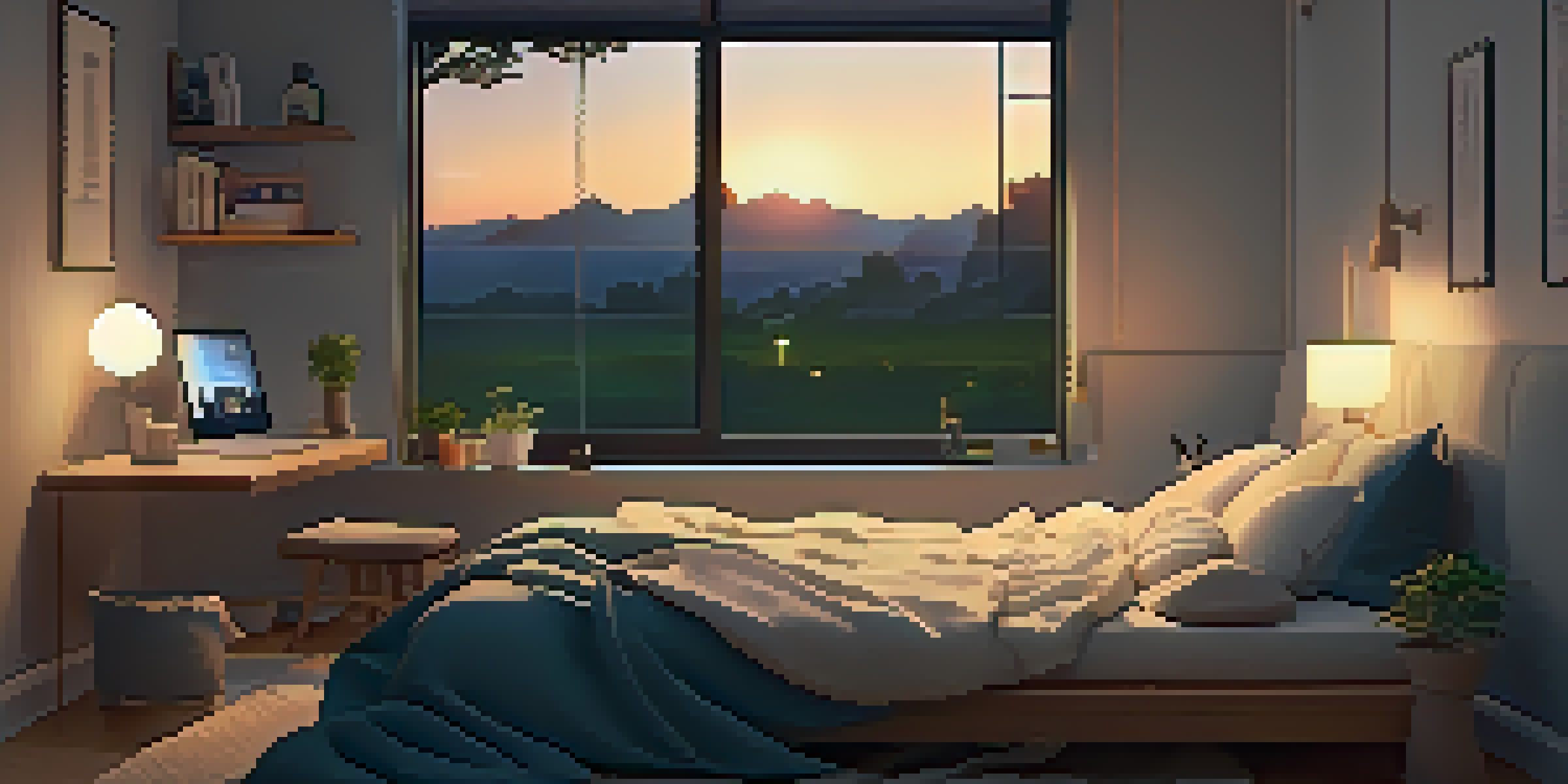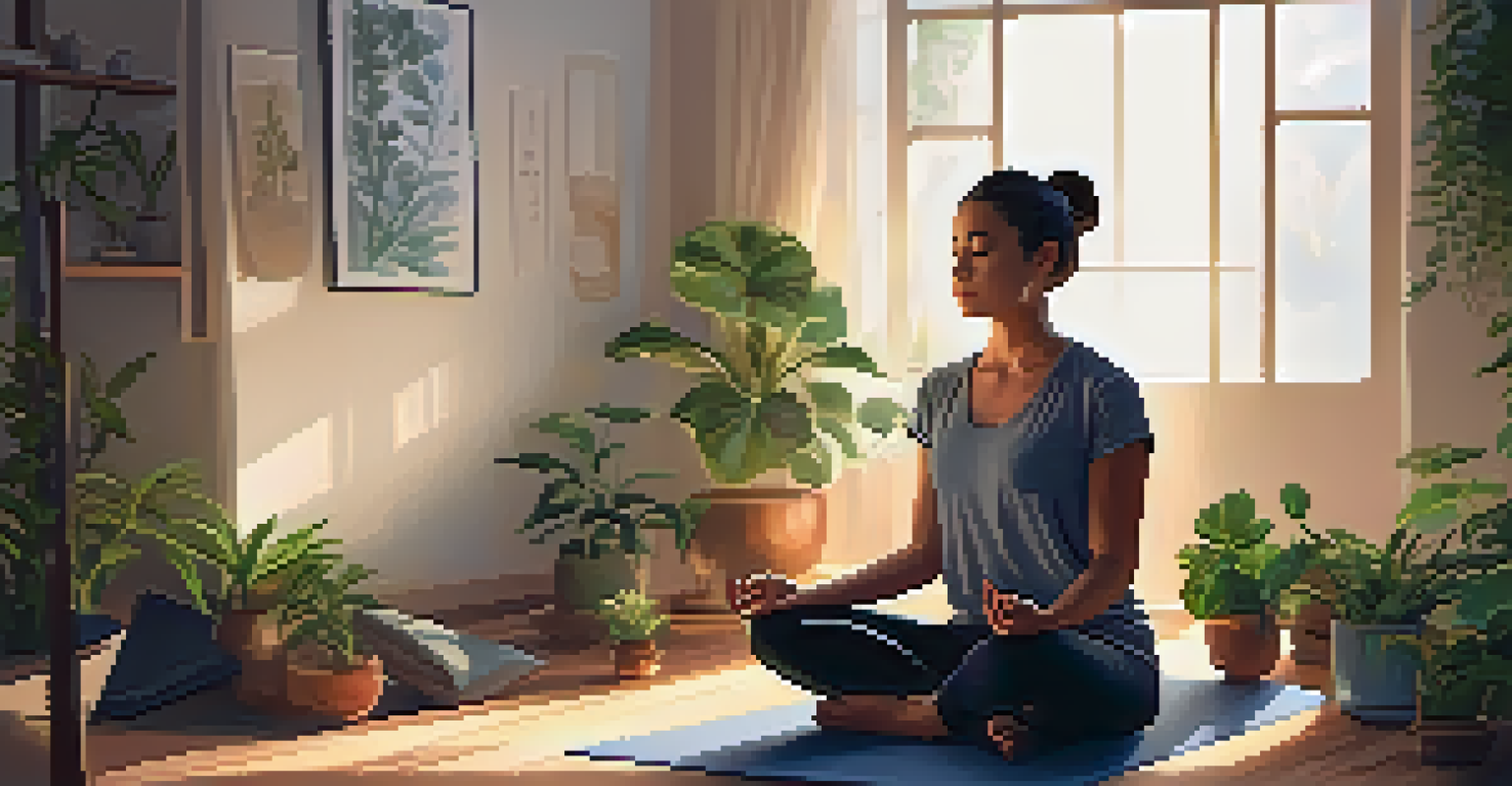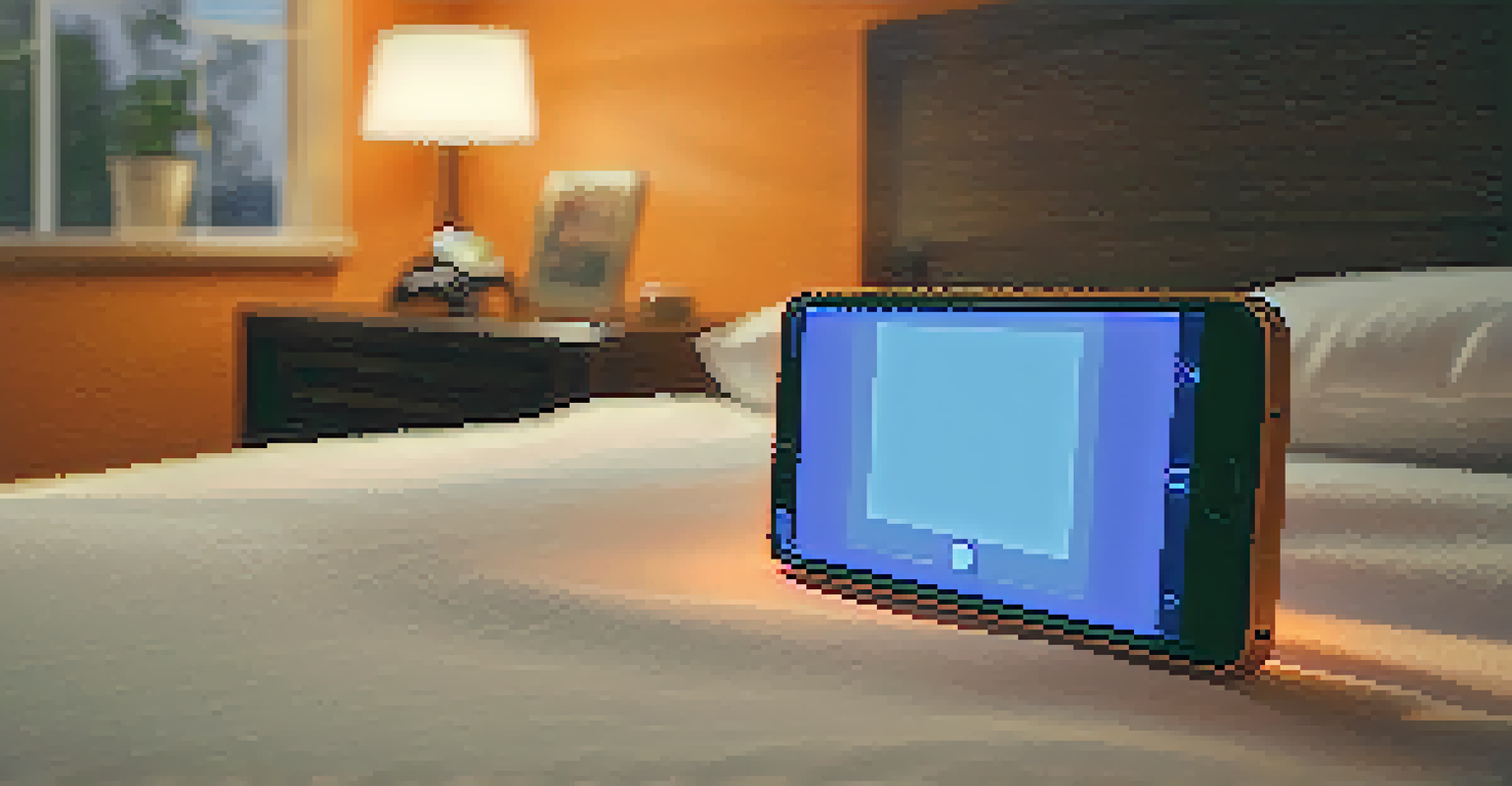Sleep and Technology: Finding Balance in a Digital World

Understanding the Sleep-Technology Connection
In our fast-paced digital world, sleep often takes a backseat. Many people find themselves scrolling through their devices late into the night. This can disrupt our natural sleep patterns, leading to a cycle of fatigue and reliance on technology.
Sleep is the best meditation.
Research suggests that the blue light emitted from screens can interfere with melatonin production, the hormone responsible for sleep regulation. When we expose ourselves to this light before bedtime, it tricks our brains into thinking it's still daytime. Consequently, we struggle to fall asleep, creating a frustrating loop.
Recognizing this connection is the first step toward healthier sleep habits. By understanding how technology impacts our rest, we can make informed choices that prioritize our well-being, paving the way for better sleep and improved productivity.
The Role of Blue Light in Sleep Disruption
Blue light, a short wavelength light emitted by screens, has a significant effect on our sleep. During the evening, exposure to blue light can suppress melatonin levels, making it difficult to wind down. The result? A restless night and a groggy morning.

Consider this: think of melatonin as a ticket to a restful train ride. If you keep the lights on, the train won't leave the station, and you'll miss your stop. Limiting blue light exposure in the hours leading up to bedtime is crucial for ensuring that your melatonin levels can rise naturally.
Blue Light Disrupts Sleep Patterns
Exposure to blue light from screens can suppress melatonin production, making it harder to fall asleep.
There are simple strategies to combat blue light exposure, such as using blue light filters or wearing special glasses. By employing these techniques, we can create an environment conducive to relaxation and sleep, ultimately helping us reclaim our nights.
Creating a Tech-Friendly Sleep Environment
Crafting a sleep-friendly environment in our technology-laden lives is essential. Consider implementing a 'tech curfew' by setting a time each night when devices are turned off. This simple practice allows your mind to unwind and signals to your body that it's time to prepare for sleep.
Technology is a useful servant but a dangerous master.
Another tip is to designate a 'charging station' outside the bedroom. By keeping devices out of arm's reach, you reduce the temptation to check notifications or scroll through social media. Instead, you can create a peaceful, tech-free space that promotes relaxation.
Incorporating calming bedtime rituals, like reading a book or practicing mindfulness, can further enhance your sleep environment. These activities help signal to your body that it's time to disconnect from the digital world and embrace a restful night's sleep.
Mindfulness and Sleep: A Perfect Pair
Mindfulness practices can significantly improve sleep quality in our tech-driven lives. Techniques such as meditation, deep breathing, or gentle yoga help calm the mind, making it easier to transition from a busy day to a restful night. Think of mindfulness as a bridge connecting your chaotic thoughts to a serene state of relaxation.
Integrating mindfulness into your bedtime routine can be as simple as dedicating a few minutes each night to focus on your breath or reflect on the day's events. This practice helps quiet the mind and allows you to let go of any lingering stress.
Tech Curfew Enhances Sleep Quality
Implementing a 'tech curfew' can signal your body to unwind and prepare for a restful night.
Research indicates that individuals who engage in mindfulness practices often experience deeper, more restorative sleep. By prioritizing these techniques, we can foster a healthier relationship with sleep and technology.
The Benefits of Sleep for Tech Users
Quality sleep is vital, especially for those who rely heavily on technology. A well-rested mind is more alert and capable of processing information efficiently. This boosts productivity, creativity, and overall cognitive function, making it easier to tackle daily tasks.
Additionally, good sleep can enhance problem-solving skills and decision-making abilities. Imagine approaching a challenging project at work after a restful night—your brain is primed and ready to tackle it head-on.
Prioritizing sleep not only benefits productivity but also improves mood and emotional well-being. When we sleep well, we wake up with a clearer mindset, ready to face the day and leverage technology to our advantage.
Finding Balance: Tech Use and Sleep Hygiene
Striking a balance between technology use and sleep hygiene is essential for optimal health. Establishing consistent sleep schedules and creating tech boundaries can significantly improve sleep quality. Consider setting specific times for device use and sticking to a regular bedtime.
Another effective approach is to utilize technology to your advantage. There are numerous apps designed to promote better sleep, from guided meditations to sleep tracking. By embracing these tools mindfully, we can enhance our sleep without sacrificing our connection to technology.
Mindfulness Boosts Sleep Quality
Incorporating mindfulness practices into your bedtime routine can help calm the mind and improve sleep quality.
Ultimately, it's about finding that sweet spot between embracing technology and prioritizing self-care. With a little effort, we can enjoy the benefits of both worlds and cultivate a lifestyle that promotes rest and rejuvenation.
Long-Term Strategies for Healthy Sleep in a Digital Age
Adopting long-term strategies for healthy sleep in our digital age is crucial for overall well-being. Start by evaluating your daily technology habits and identifying areas that may disrupt your sleep. Consider keeping a sleep journal to track patterns and discover what works best for you.
Incorporate healthy sleep practices into your daily routine, such as regular exercise, limiting caffeine intake, and establishing a relaxing pre-sleep ritual. These habits contribute to improved sleep quality and can help mitigate the negative effects of technology.

Remember, achieving balance is an ongoing journey, not a one-time fix. By continually reassessing your relationship with technology and sleep, you can make adjustments that enhance your overall quality of life.